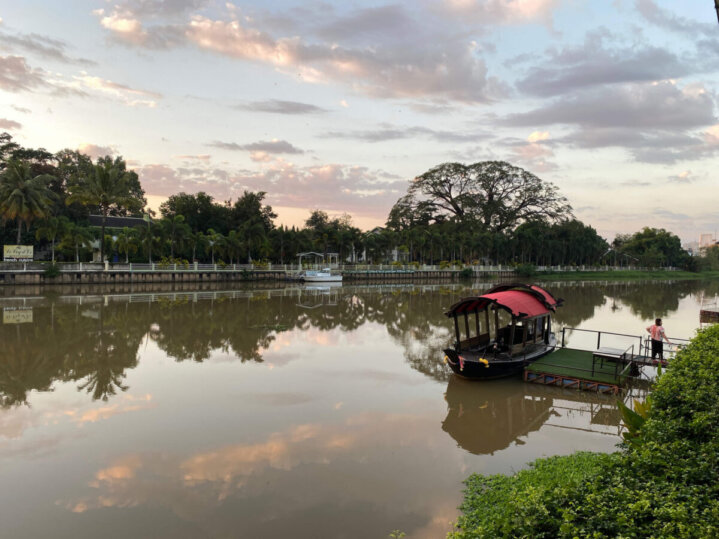
The joys of Chiang Mai
The year 2020 which ushered in the horrific Covid-19 pandemic has been a traumatic one for all of us. Having been cooped up in Bangkok for the last eight months, I was getting itchy feet and ready to travel. The invitation from the Thailand Incentive and Convention Association (TICA) to visit Chiang Mai in November for three days was a timely and welcomed offer.
It has been years since I visited this popular Northern city Chiang Mai. When I saw that the first item in TICA’s programme was a visit to the indigo dyeing community of Lhong Him Khao, I signed up for the trip without hesitation. I remember fondly the happy times I had making tie-dyed T-shirts at the backyard of my friend’s house as a teenager. I thoroughly enjoyed the art of tie-dyeing. The only drawback was that my family and friends, to their chagrin, had to tolerate seeing me in my vibrant creations for many years to come.
Those of us living in Thailand have been more fortunate than those living overseas in many ways. We are very grateful that we can move around quite freely to do our day-to-day activities and travel to other parts of the country, as long as we are careful of course – wear masks when we are outside, maintain social distance, avoid crowded places and wash our hands often.
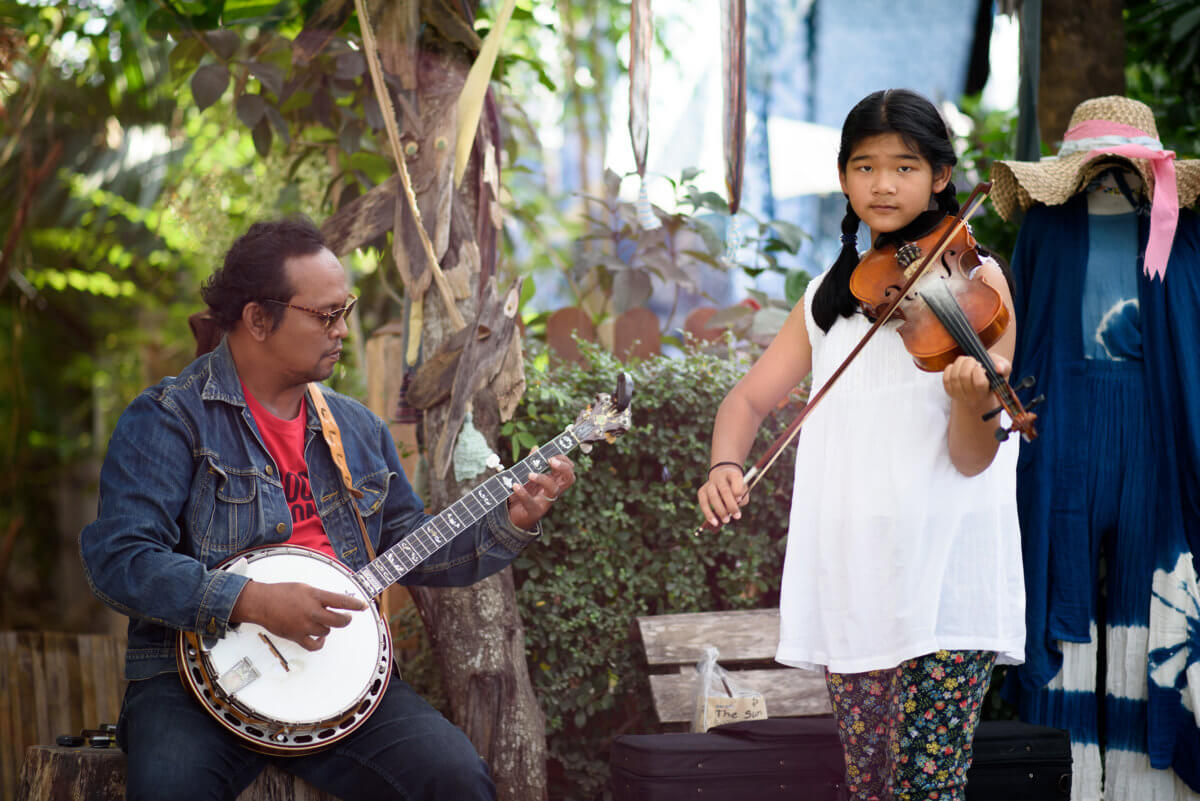
Welcoming local band at Lhong Him Kao Village 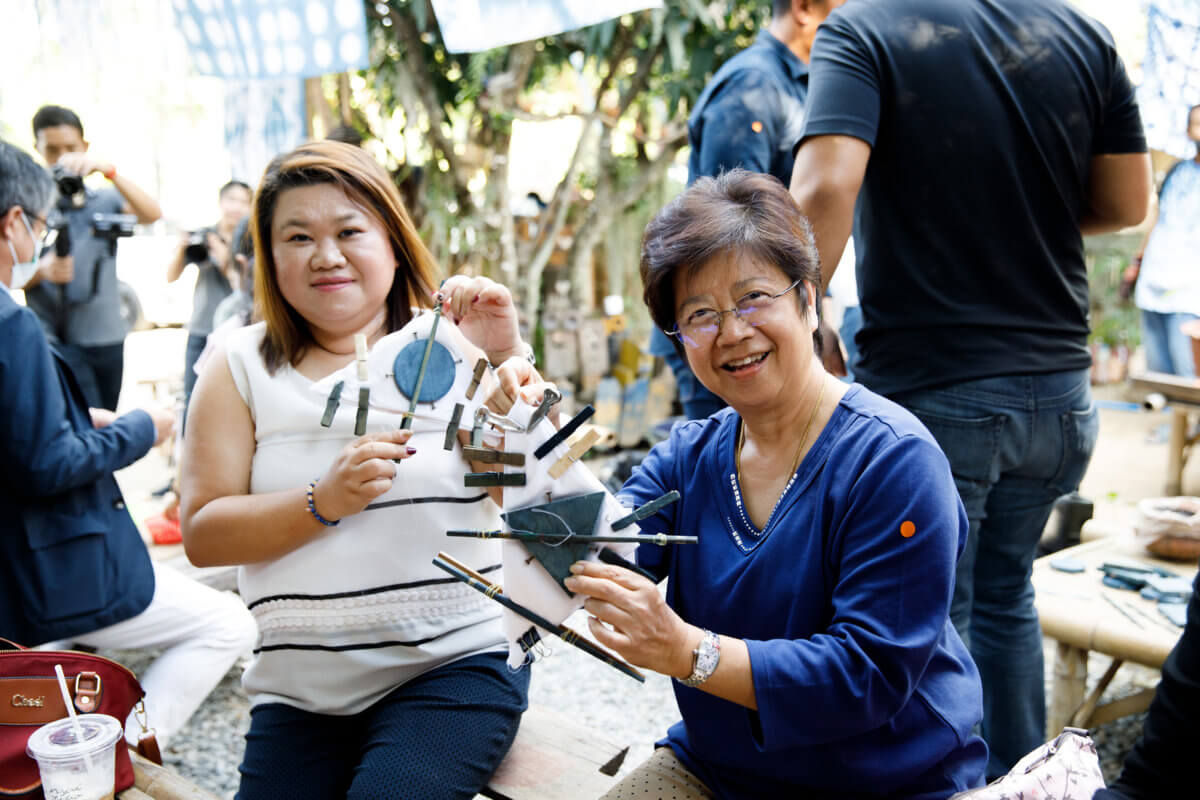
Our cloths nicely tied up for indigo dyeing. 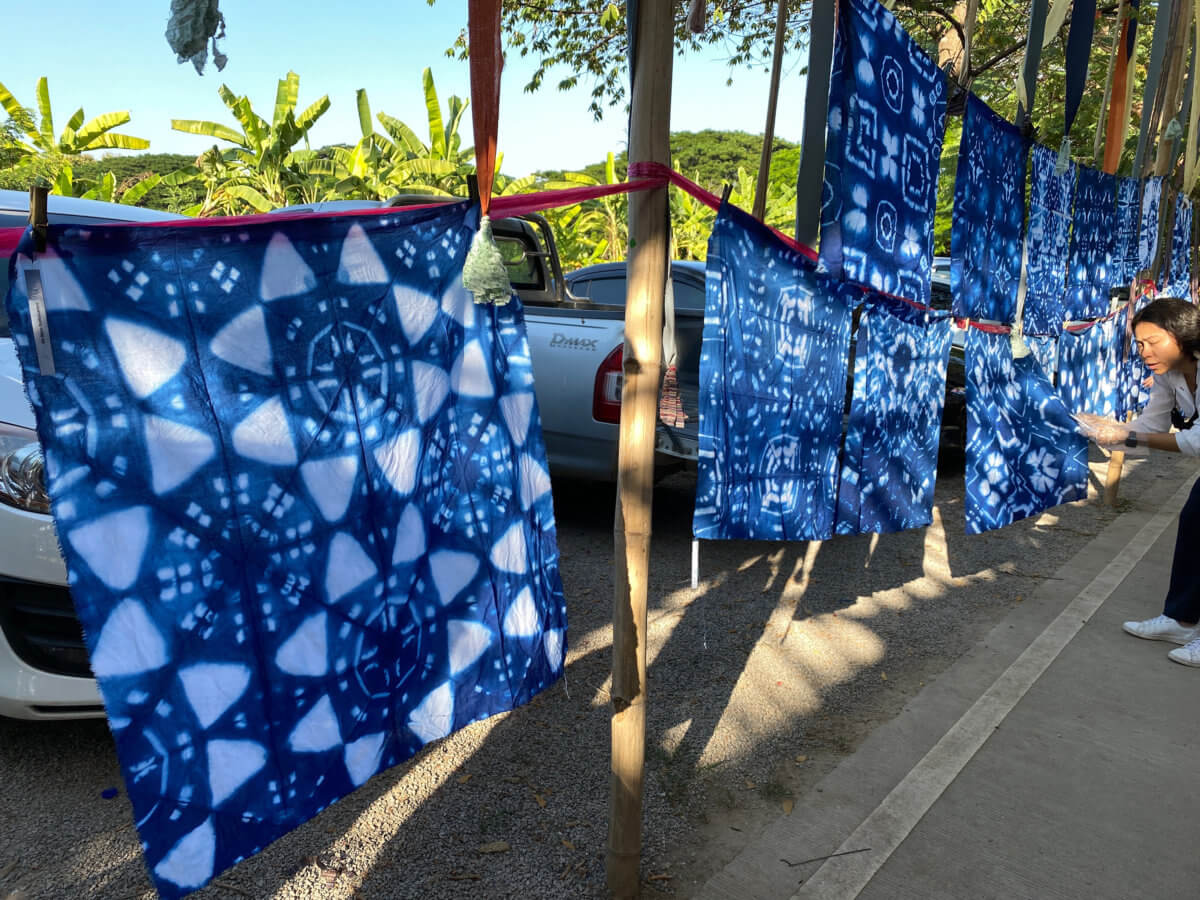
My attractive finished product on extreme left.
On the day of the familiarisation trip, I packed my masks and alcohol and boarded the Bangkok Airways’ one hour flight to Chiang Mai. There were about 30 of us in the group. After we landed and collected our luggage, we travelled by coach to Lhong Him Khao village for our indigo dyeing adventure. Our party was warmly welcomed by a Thai musical band and we were soon ready to get to work. Unlike my previous experience where we used strings to tie-dye our T-shirts, the equipment for this procedure was quite surprising. They had on the table for us, chop sticks, clothes pegs, paper clips, round and square boards and rubber bands. Each of us used whatever we fancied to tie the cloth however we desired. The finished pieces were then taken for dyeing and after that process, VOILA! I was quite pleased yet intrigued with the design that I created. Unfortunately, I will never be able to repeat that pattern again.
Soon, it was time to head for the Ratilanna Riverside Spa Resort for a short rest and to get ready for a networking dinner at Kiti Panit, a fine dining restaurant housed in a 132-year-old teak tree mansion which once operated as a General Store run by Chinese immigrants. We were served Lanna and Tai Yai dishes, many of which were tasty yet quaint. It was a marvelous gastronomic adventure, nonetheless.
Early the next morning, we early risers had the pleasure to offering alms to the monks at the hotel’s beautiful riverside pier. Conveniently, the hotel staff has already prepared the alms for us. All we had to do was offer them to the monks. One of the TICA members gave a short explanation of the Buddhist ritual of alms giving to the non Buddhists in our entourage. Although I am a Buddhist myself, I even learned a thing or two from the narrative.
A lovely breakfast by the river followed. The weather was pleasantly cool, perfect for breakfast outdoors, but not cold enough for me to show off the several jackets that I had dug up from storage to wear them should it get cold in Chiang Mai.
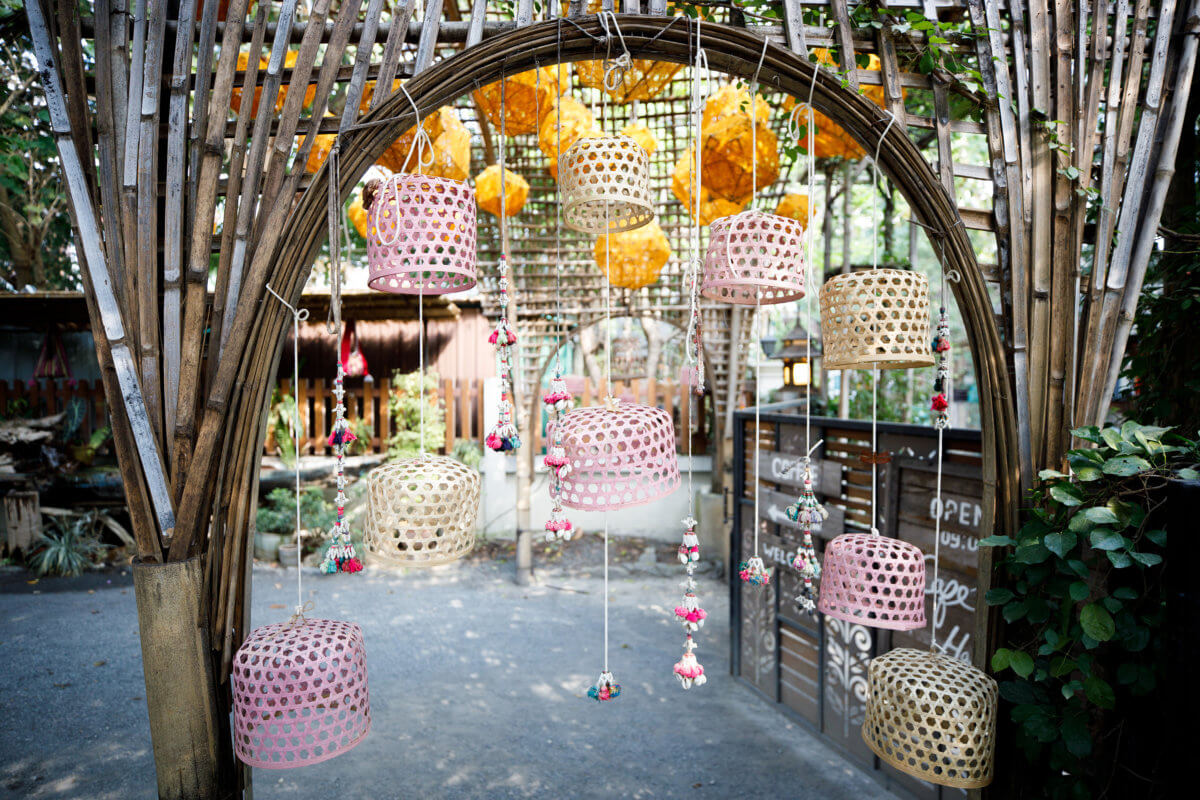
Art & craft shops of Mon community. 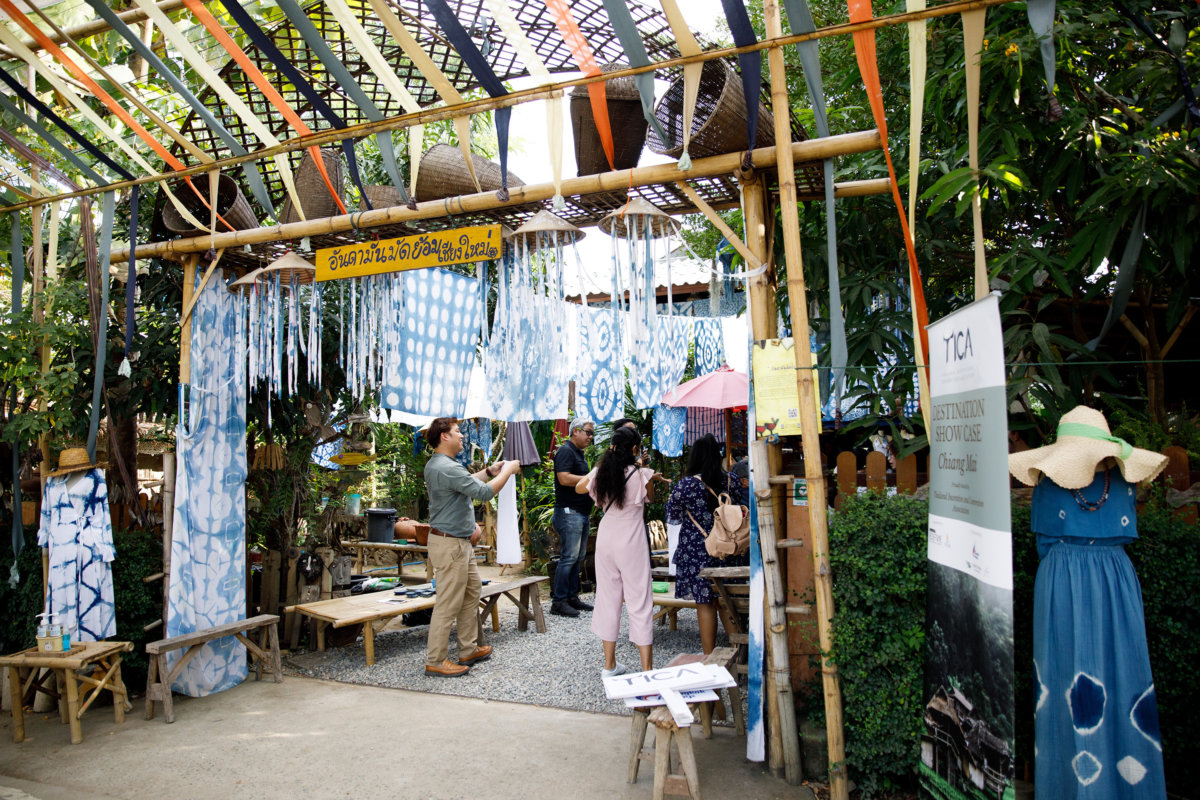
Art & craft shops of Mon community.
After breakfast, we headed off to the Araksa Tea Garden located in the foothills of Mae Tang District. It took 90 minutes of driving on winding roads to get up there. The organic tea garden spanned over 100 rai of land. It was my first visit to a tea plantation and was pleasantly surprised that the tea trees, over 20,000 in number, were planted on fairly flat land and not on a plateau. That made it easier for us to carry out our assignment for the morning — picking tea leaves.
We were given a briefing on proper tea picking by the friendly staff. Thereafter, we each got our own basket and attempted to pick as many tea leaves as possible. We were going to make green tea, which meant we had to choose one bud with 2 leaves. For white tea, we would only pick the bud and for black tea, we would pick the bud and 3 leaves. Time passed quickly as we were having fun playing farmer and before we knew it, it was time for us to turn in our tea collections for the next step. Mae Jan, our tea expert, began kneading the tea leaves and thereafter began roasting the leaves. After some time, the big pile of tea leaves shrunk to perhaps one tenth of the original size. My earlier inspiration to become a professional tea picker also shrank in size in proportion to the roasted tea leaves. I then got the understanding of how many tea leaves must be collected to produce a small package of tea. It’s a good thing I didn’t give up my day job before I left for this trip.
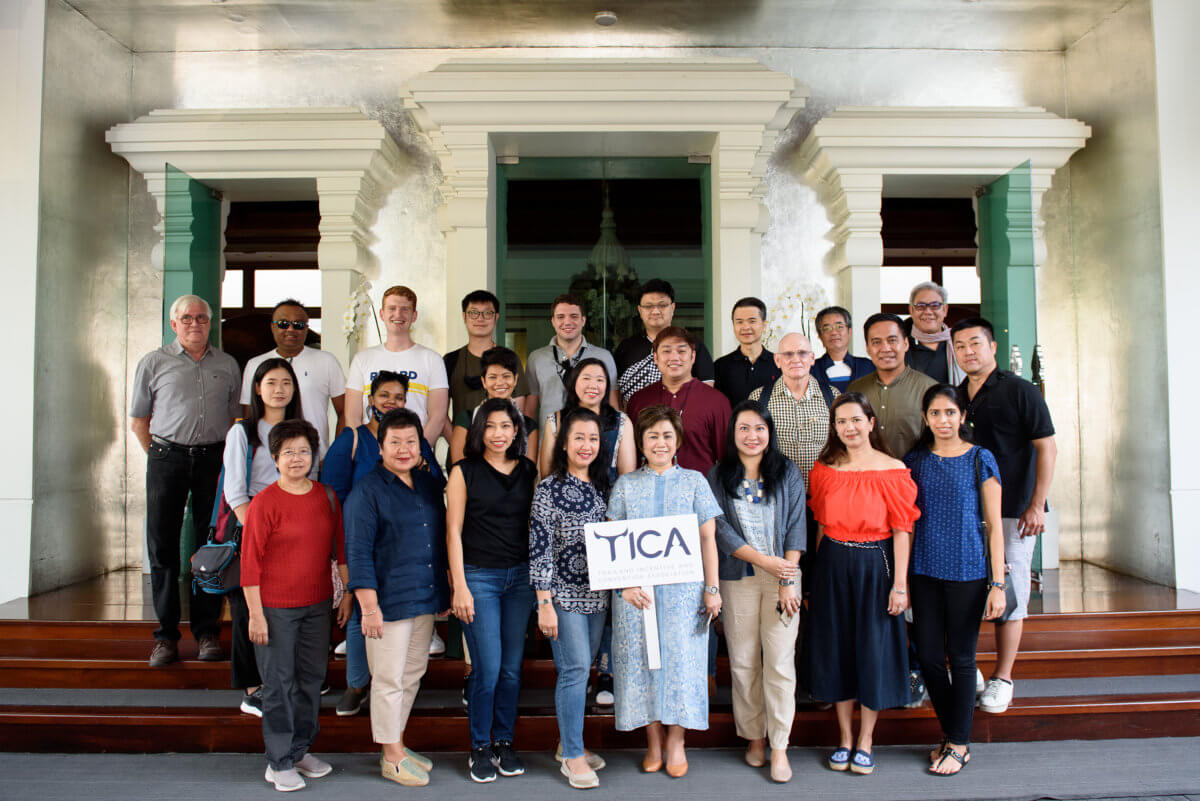

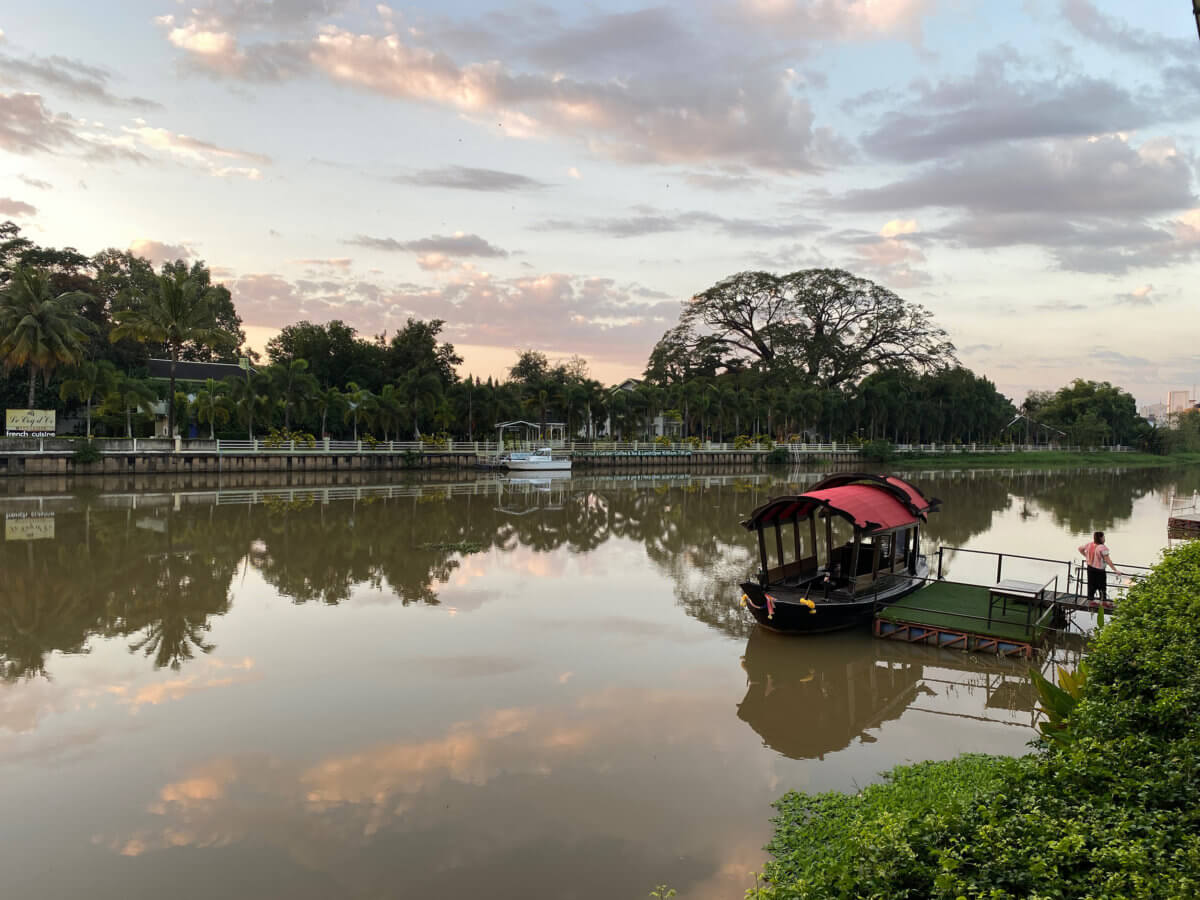
Beautiful view of the Mae Ping river.
After all this hard work, we were invited to taste the 15 types of white, green and black tea at the plantation. Now, that was more my kind of thing and all of us happily obliged. It was very refreshing to sample the different tastes of tea, some more subtle than others. The aromatic “Kularb” or rose flavour was my favourite. I was pleased to hear that it won an award last year.
In a little while it was time for lunch. The Araksa lunch menu included Thai rice salad with condiments or “Khao Yum” in Thai. The colourful ingredients, once mixed together, had the sweet, sour and salty taste (and hot if you add chillies). This dish has become very popular among health conscious diners since it has lots of fresh vegetables like purple cabbage, bean sprouts, coconut shaves plus flowers. I personally find that that this dish takes a bit of getting used to, since I still consider eating fresh flowers a bit bizarre. The fried crispy tea leaves with pork spicy dipping was quite delicious. It was addictive like eating French fries. Once you start, you cannot stop. Serving organic rice crackers made with watermelon juice (Khao Tan Nam Tangmo) accompanied by — you guessed it — hot or cold tea of your choice was a perfect way to end the meal.
Visiting Wat Umong, a 700 year old Buddhist temple was next on the itinerary. Located at the foot of Doi Pui Mountain, the temple was home of old ruins with meditation tunnels. After climbing up a multitude of uneven brick steps, we came to a large brick pagoda, made famous by a Thai popular soap opera. But honestly speaking, I would give this spot a miss.
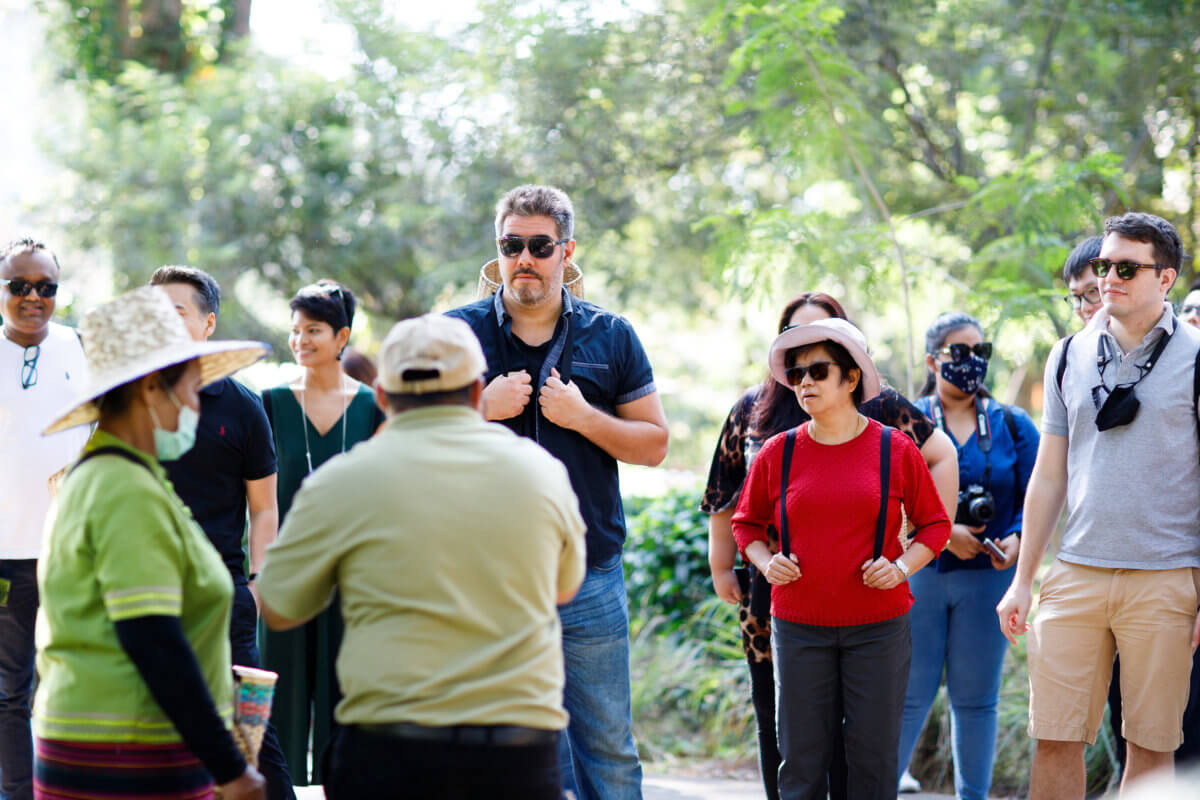
This is what a tea tree looks like. 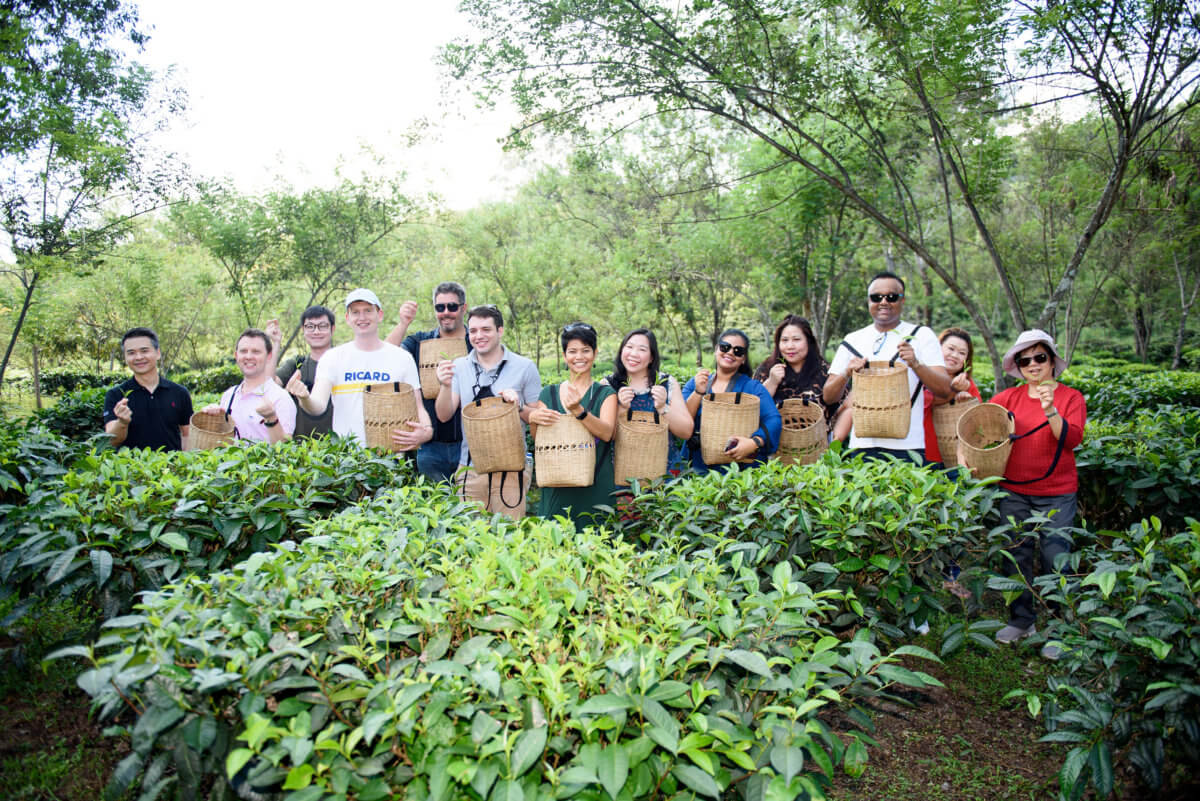

The inexperienced but enthusiastic tea-leaf-picking team. 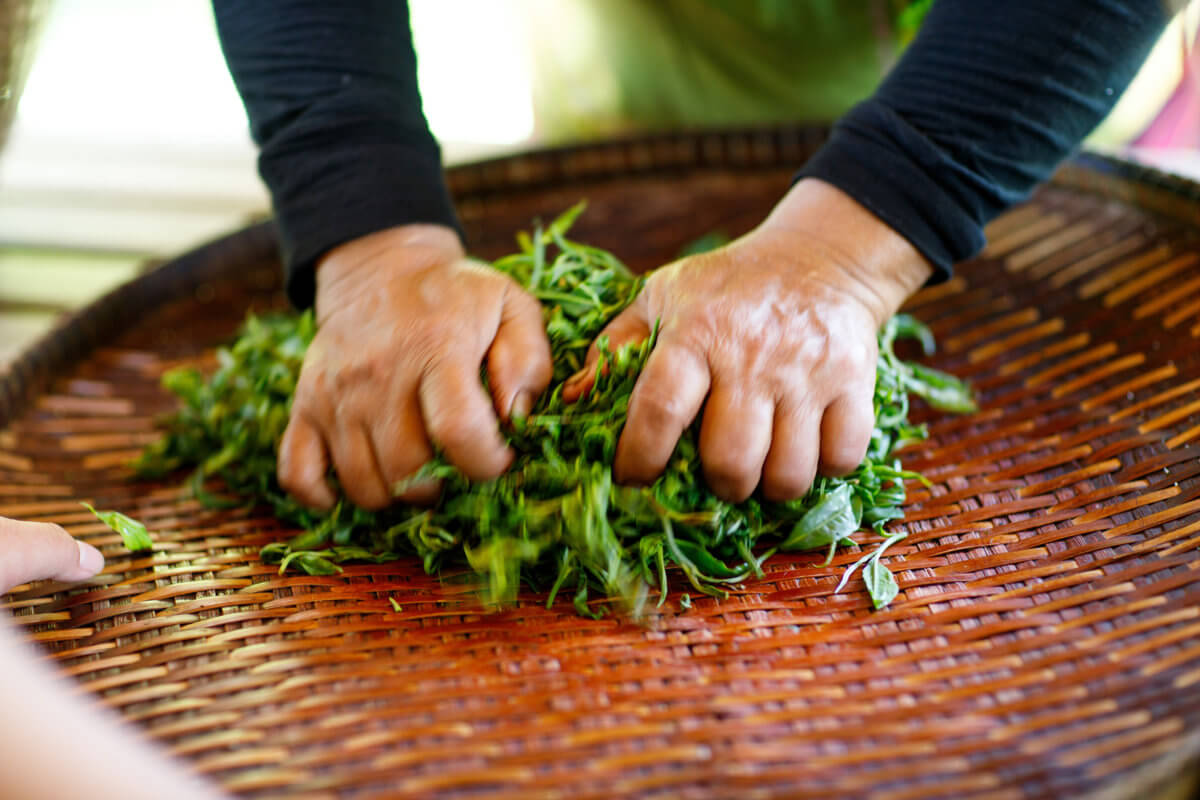
Kneading tea leaves to start the process.
We did a quick check in at the Shangri-La Hotel and got ready to go to dinner at Food for You by Chef Tutu. Chiang Mai is well known for its numerous restaurants and variety of international cuisine, and this homey restaurant did not disappoint. Soon after we arrived, the Chef, whose full name was Prapatsorn Na Chiangmai, started energetically cooking his signature dishes for us. Crab salad, fried duck, grilled shrimp, crab soup and steak… most dishes cooked to perfection. And a good selection of fine white and red wine served with the dishes made the dinner even more palatable. The only comment I would like to add was that the chef was too trigger happy with his chilies for someone like me who doesn’t take hot food.
After whisking off his last dish for our group, Chef Tutu came out to greet his guests. We found out he has been cooking since he was nine and has been serving special dishes to his clients for the past 30 years. He enjoys going to the local market daily to get the freshest ingredients for his dishes. He is very adventurous and is happy to concoct special dishes not in the menu for his customers. Just let him know.
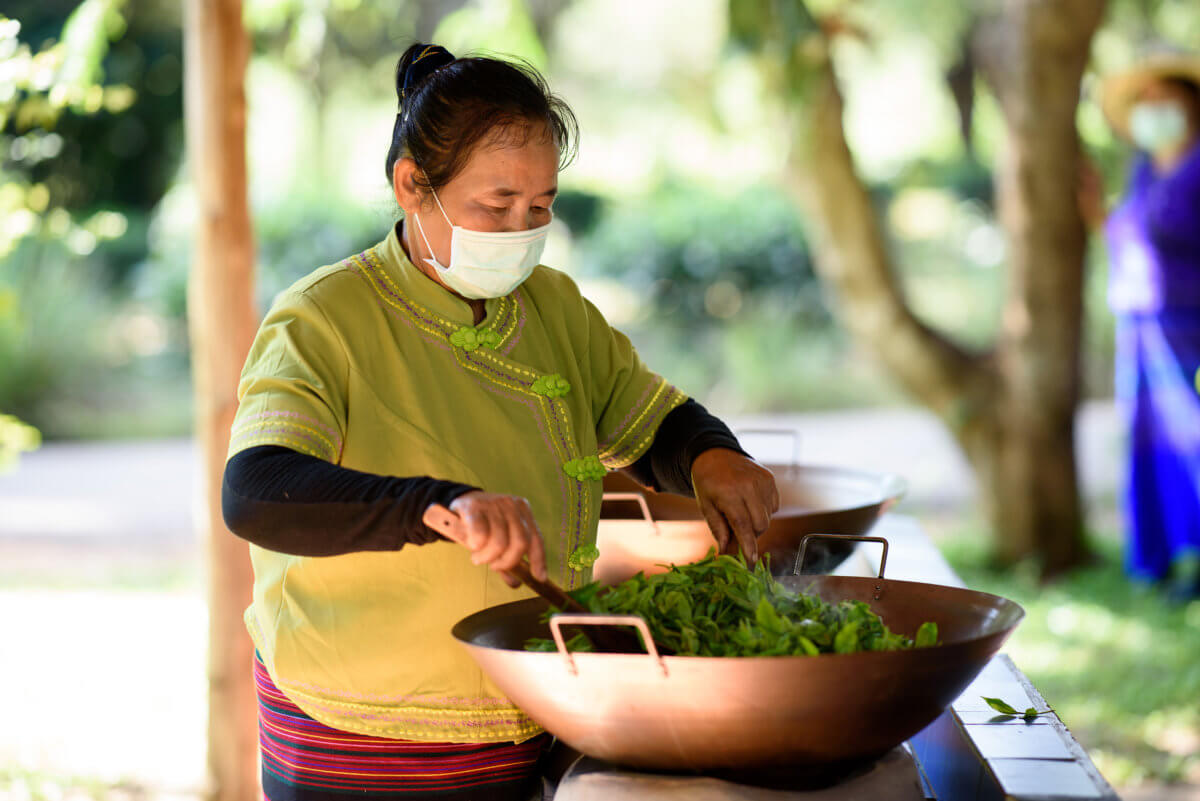
Roasting the tea leaves. 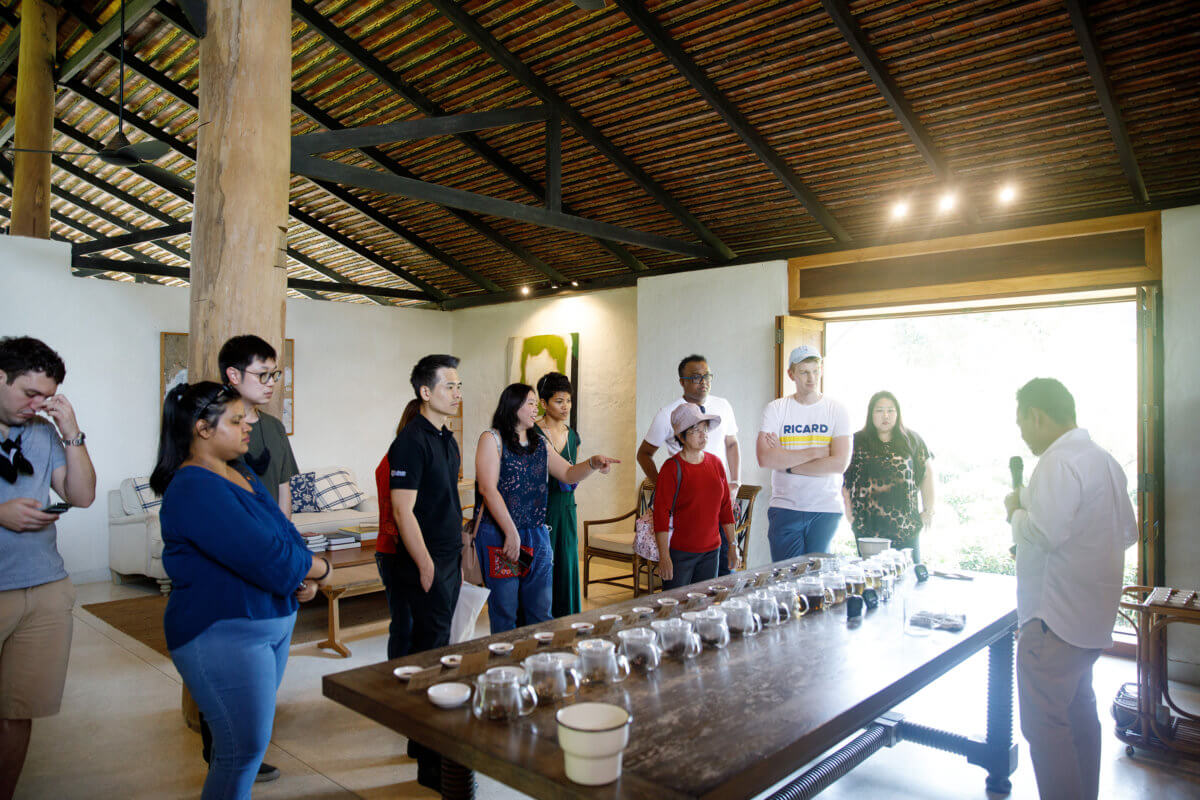
The extensive tea presentation. 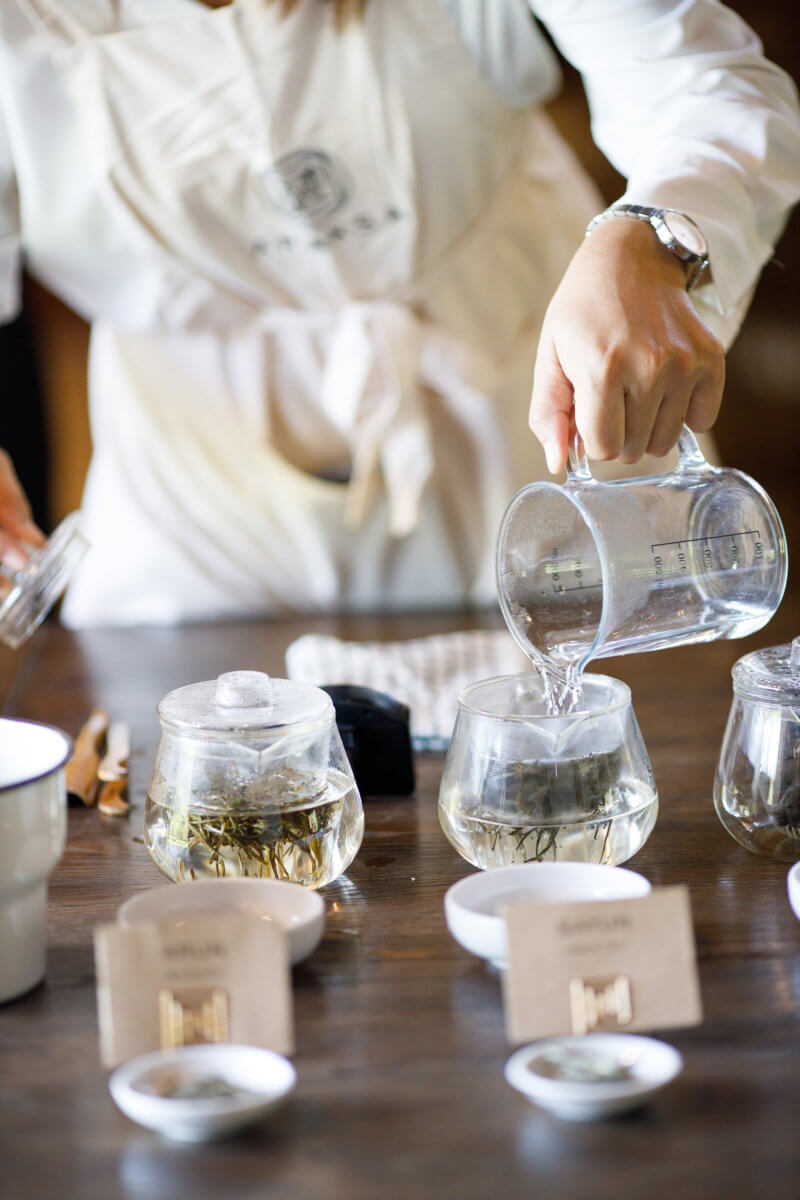
The art of making good tea. 
The art of making good tea.
The trip to Chiang Mai ended all too soon on the third day of our trip. After a leisurely breakfast at the Shangri-La Hotel, we headed for the airport amidst heavy traffic. We were amazed to find that the airport was very crowded. People are travelling again. The flight was also fully booked. After a one hour flight, we were happy to land in Bangkok and go home for a nice rest from our fun and informative excursion.
Where in Thailand shall we go next? It took a lockdown for us to realise that we have so many interesting and beautiful places to visit right here in Thailand instead of going overseas for our vacation. Life’s paradigm has changed drastically and going abroad for a holiday is a privilege that is not accessible to us for the time being. So why not rediscover the amazing wonders of Thailand instead?
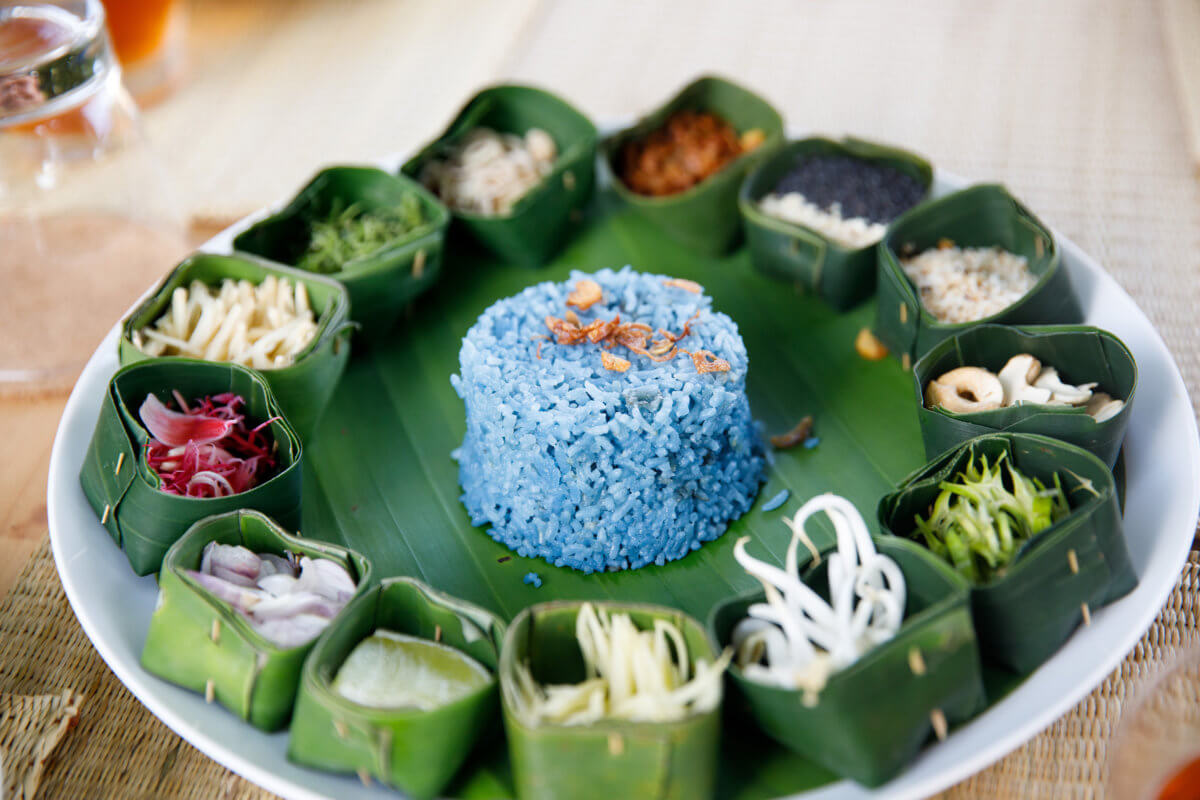
Colorful Khao Yum. 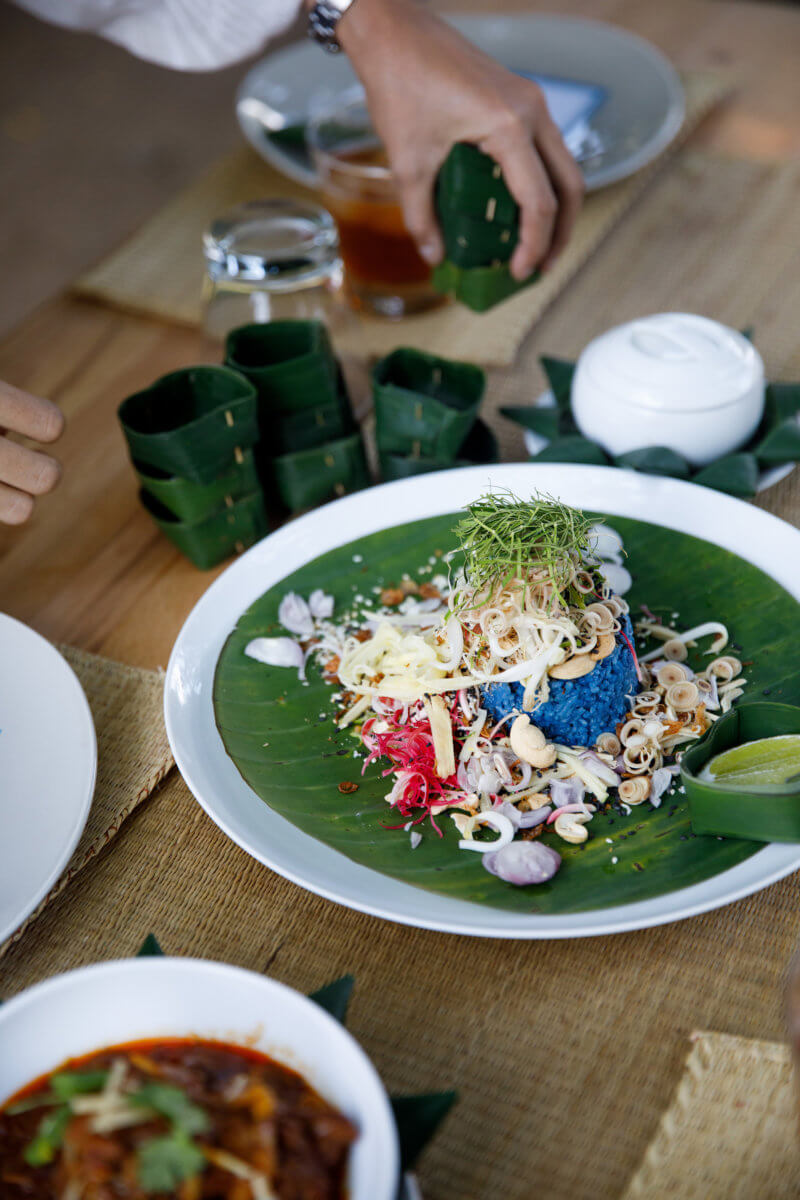
Colorful Khao Yum. 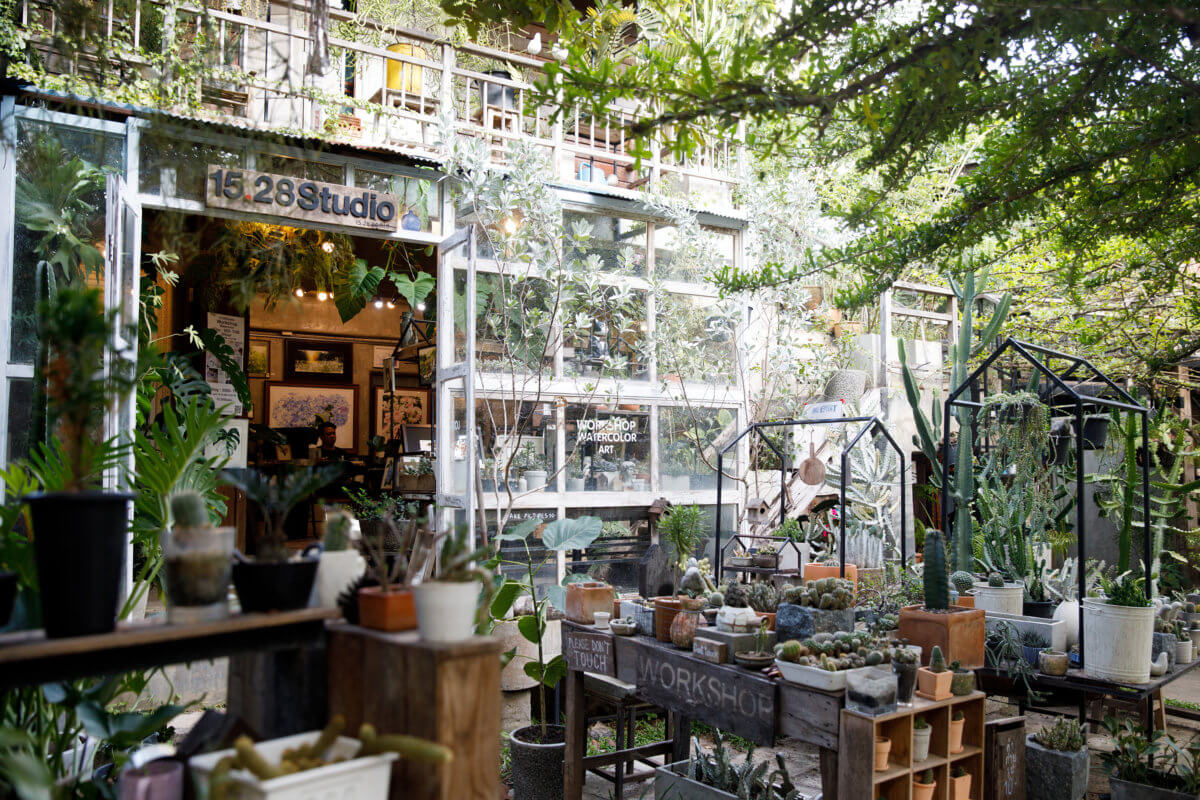
Art & craft community at Baan Kang Wat. 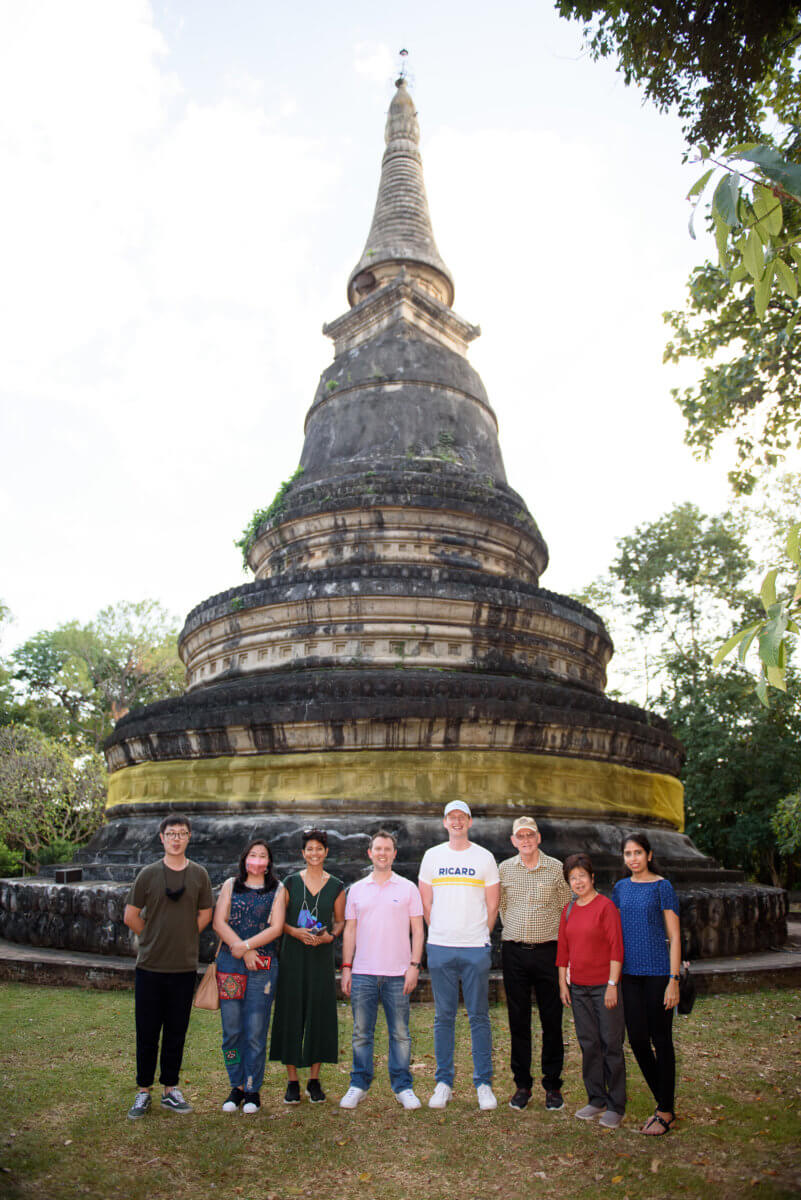
The unpainted stupa of Wat Umong. 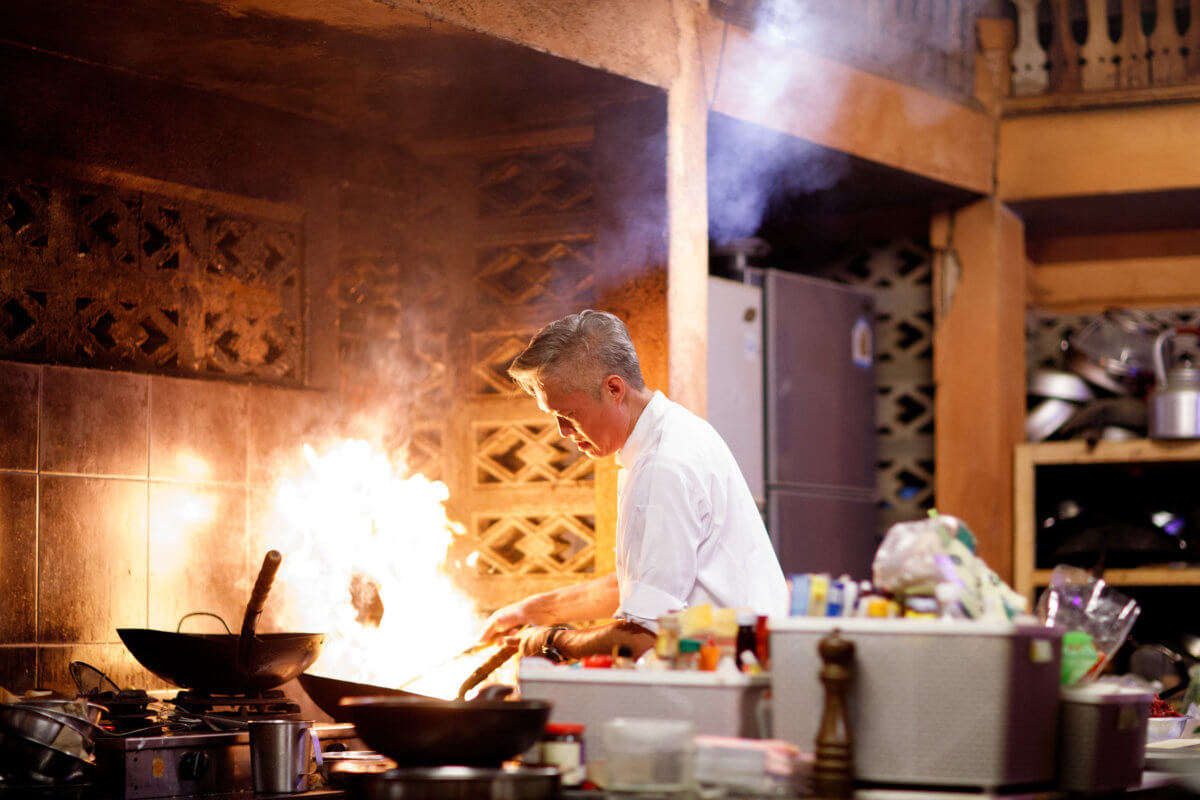
Chef Tutu cooking up a storm for us in his open kitchen.
However, always keep in mind that wherever we go, we must keep our guards up against the possible infection of the Covid-19 virus. Always social distance and keep our masks on and of course wash our hands often. The pandemic is not over yet. We must remain vigilant when we are in public areas, especially in crowded places.
———-
About the author.
Netra Ruthaiyanont is currently the Marketing Director of GT Auto Co., Ltd., authorised Volvo Car retailer. The former member of the print media enjoys writing stories about travel, education and the challenging lives of women.



